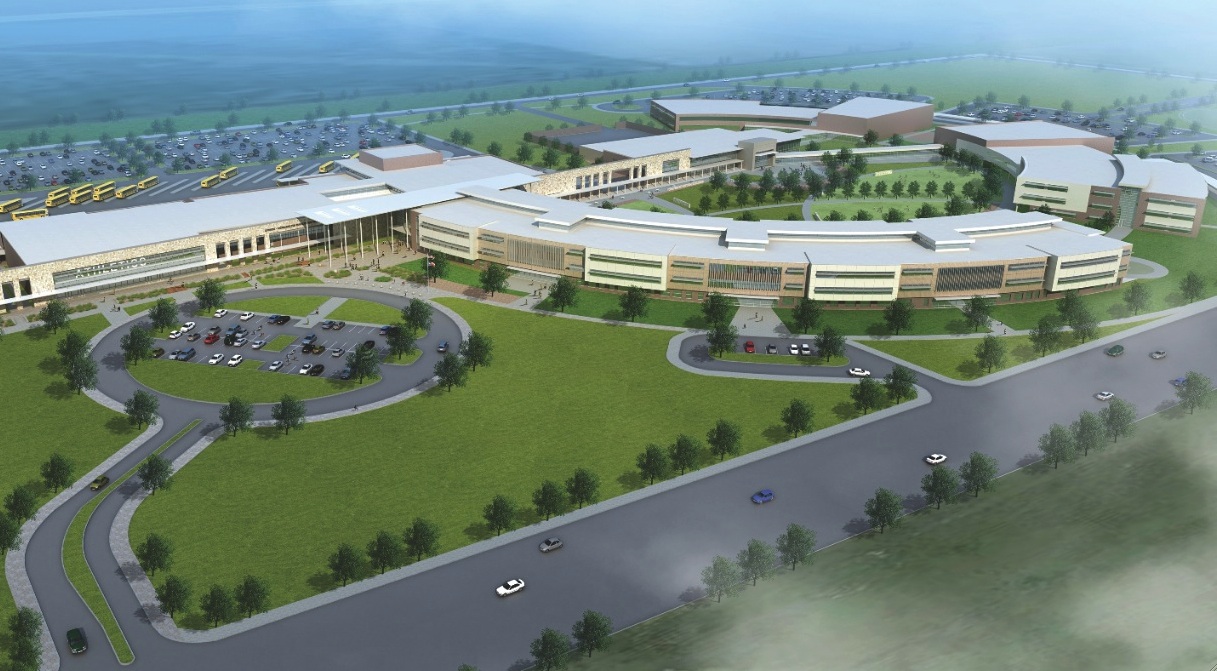Financing for school construction depends primarily on local bond referenda, so it’s difficult to make a blanket statement about national trends. However, Paul Abramson, Education Market Analyst for the School Planning & Management magazine, has estimated that school spending for project completions of construction, additions, and renovations hit $14.1 billion in 2014, or 5.4% more than the previous year.
AEC professionals say that, on a case-by-case basis, individual projects are being adequately financed. But many districts are struggling to have new construction and renovation keep pace with student population growth.
Montgomery County, Md., has seen its student count increase by nearly 12%, to 154,230, since 2007. More than 9,000 students are being taught in portable classrooms. The district expects its student count to reach 165,358 by 2020, according to the Washington Post. District Superintendent Joshua Starr has asked for $221 million to be added to the district’s six-year capital improvement budget, which would bring it to $1.75 billion.
“There are five million PK-12 students in Texas, and we’re gaining 100,000 students per year, which translates into a need for 100 campuses.” — Dan Boggio, President/CEO, PBK
In California, there’s a $2 billion backlog in applications for school-construction assistance from districts around the state, according to the Sacramento Bee. In January, construction and home-building groups launched a campaign to get a $9 billion school bond on California’s November 2016 ballot.
In other parts of the country, communities are backing school financing programs to modernize older buildings and keep up with student growth. “There are five million PK-12 students in Texas, and we’re gaining 100,000 students per year, which translates into a need for 100 campuses,” says Dan Boggio, President/CEO of architectural firm PBK. “School districts are very aware of this, and bond referendums [in Texas] have been passing by wide margins.”
For the past 15 years, bond financing has been steady in Wichita, Kan., where “we’ve done a lot of construction,” says Julie Hedrick, Facilities Division Director for Wichita Public Schools. This district is at the tail end of a $370 million bond passed in 2008, and currently is building a $60 million high school—its largest to date—and adding an auditorium and classrooms to two middle schools.
By a vote of three to one, voters in Shoreham, N.Y, recently approved the Shoreham-Wading River Central School District’s $33.5 million construction bond issue for a $48.5 million infrastructure and renovations program dubbed “The Renewal Project,” which will encompass all four schools operated by the district.
Orange County, Fla., last summer approved a half-cent sales tax extension that will help fund school construction program through the next decade. The county has about $300 million in school projects already in the works.
Under its latest school construction bond, valued at $748 million, the Frisco (Texas) Independent School District, purchased 16 school sites over the past five years. It has two high schools, two middle schools and one elementary school under construction. The Frisco ISD, which lies about 30 miles north of Dallas, will hit 50,000 students in 2015, and has been adding 3,000–3,800 a year.
A 2012 bond valued at $74.9 million should cover the six facilities that Western Maricopa County Education Center in Arizona expects to complete over the next few years. A $482 million bond passed in 2012 is allowing Portland (Ore.) Public Schools to modernize three high schools and rebuild a K-8 school.
Joseph DaSilva, who oversees school construction for the Rhode Island Department of Elementary and Secondary Education, notes that the General Assembly’s moratorium on construction could be holding up as much as $100 million in financing for school projects.
To stretch their budgets, some districts are being more selective about which projects to pursue. The East Baton Rouge Parish (La.) School Board—which funds projects through a one-cent sales tax that extends through 2018—in January postponed plans to spend $6.2 million to renovate two elementary schools in 2016.
With bond and tax financing always uncertain, school officials remain cautious about seeking alternate capital streams from the investment and corporate sources. Charles McKenna, CEO of the New Jersey School Development Authority, says public-private partnerships may have worked in higher education—he cites the University of Kentucky and Arizona State University—but he’s “not sold” on PPPs for construction projects in the Garden State.
Related Stories
K-12 Schools | Jun 5, 2023
How to achieve cost-effective kindergarten classrooms
Educational architect Robin Randall shares realistic advice about the challenges of adding developmentally appropriate, play-based kindergarten classrooms while respecting budget limitations.
K-12 Schools | May 30, 2023
K-12 school sector trends for 2023
Budgeting and political pressures aside, the K-12 school building sector continues to evolve. Security remains a primary objective, as does offering students more varied career options.
K-12 Schools | May 25, 2023
From net zero to net positive in K-12 schools
Perkins Eastman’s pursuit of healthy, net positive schools goes beyond environmental health; it targets all who work, teach, and learn inside them.
K-12 Schools | May 22, 2023
The revival of single-building K-12 schools
Schools that combine grades PK through 12 are suddenly not so uncommon. Education sector experts explain why.
K-12 Schools | May 17, 2023
Designing K-12 schools for students and safety
While bullying, mental health, and other acts of violence are all too common in schools today, designers have shown that smart and subtle preventive steps can make a big difference. Clark Nexsen’s Becky Brady shares how prevention and taking action at the design level can create safe and engaging learning environments.
K-12 Schools | May 12, 2023
In Virginia, a new high school building helps reimagine the experience for 1,600 students
In Virginia, the City of Alexandria recently celebrated the topping out of a new building for Alexandria City High School. When complete in 2025, the high-performance structure will accommodate 1,600 students.
Sustainability | Apr 20, 2023
13 trends, technologies, and strategies to expect in 2023
Biophilic design, microgrids, and decarbonization—these are three of the trends, technologies, and strategies IMEG’s market and service leaders believe are poised to have a growing impact on the built environment.
K-12 Schools | Apr 18, 2023
ASHRAE offers indoor air quality guide for schools
The American Society of Heating, Refrigerating and Air-Conditioning Engineers (ASHRAE) has released a guide for educators, administrators, and school districts on indoor air quality. The guide can be used as a tool to discuss options to improve indoor air quality based on existing HVAC equipment, regional objectives, and available funding.
K-12 Schools | Apr 13, 2023
Creating a sense of place with multipurpose K-12 school buildings
Multipurpose buildings serve multiple program and functional requirements. The issue with many of these spaces is that they tend not to do any one thing well.
Market Data | Apr 11, 2023
Construction crane count reaches all-time high in Q1 2023
Toronto, Seattle, Los Angeles, and Denver top the list of U.S/Canadian cities with the greatest number of fixed cranes on construction sites, according to Rider Levett Bucknall's RLB Crane Index for North America for Q1 2023.

















